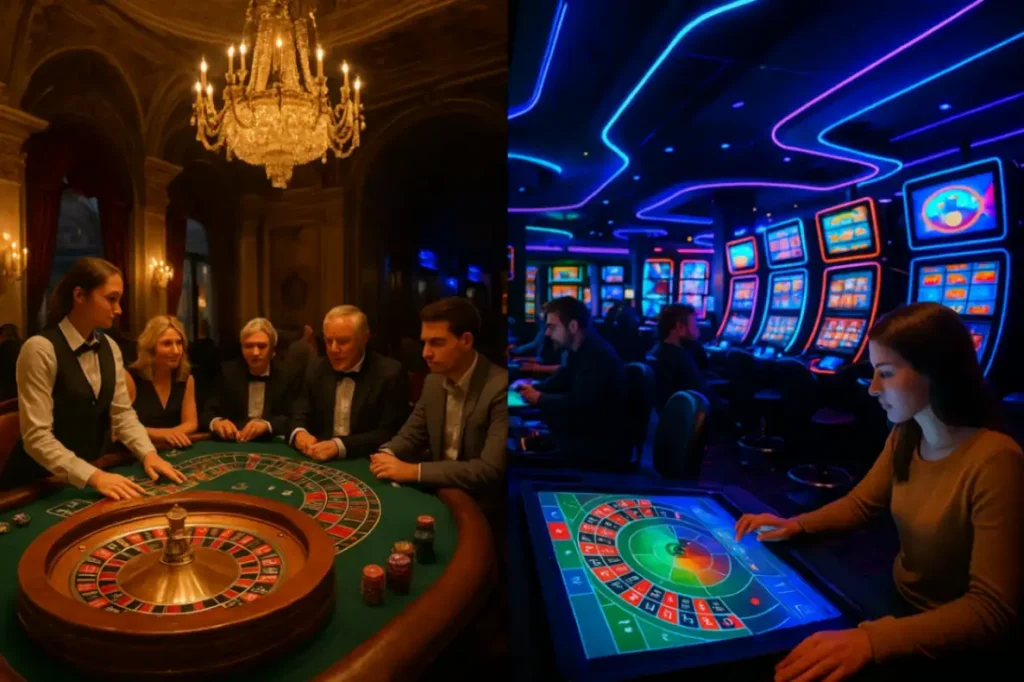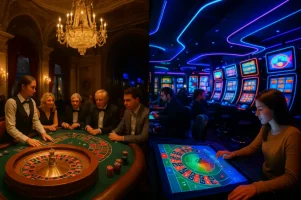The image of the European casino has always carried an aura of sophistication, exclusivity, and timeless glamour. From Monte Carlo’s gilded halls to the historic salons of Baden-Baden, these establishments were long associated with aristocracy, high society, and the thrill of games like roulette and baccarat. Yet in the 21st century, Europe’s elite casinos are undergoing profound transformations. The forces of technology, shifting cultural attitudes, and evolving entertainment preferences are reshaping how luxury gambling destinations operate and appeal to a new generation of patrons.
What was once solely a playground for royalty and wealthy travelers is now a stage where innovation, tradition, and luxury converge.
The Legacy of Classic European Casinos
Casinos in Europe have always been more than gambling houses; they were cultural landmarks. The 19th-century architecture, ornate chandeliers, and velvet-covered tables built an atmosphere of prestige. Monte Carlo, often considered the crown jewel of European gaming, was designed not just as a gambling venue but as an emblem of Monaco’s identity. Baden-Baden in Germany became synonymous with refinement and leisure. These establishments defined the essence of elite entertainment, offering concerts, fine dining, and social gatherings alongside games of chance.
The traditional European casino emphasized ceremony and exclusivity. Guests followed strict dress codes, and access was often restricted to the wealthy or well-connected. Gambling was an activity woven into a broader cultural experience—symphony halls, art exhibitions, and gourmet restaurants completed the setting. This legacy continues to influence modern operators, who balance their historical prestige with the demands of a digital era.
Technology as the New Foundation of Luxury Gaming
In the past two decades, technology has become the defining factor in the evolution of casinos. What began as simple electronic slot machines has now grown into immersive digital ecosystems. Elite casinos in Europe are investing in state-of-the-art gaming floors equipped with augmented reality tables, digital chips, and biometric security systems. High rollers expect seamless experiences where traditional card games blend with modern enhancements like real-time statistics, virtual dealers, and personalized digital interfaces.
Furthermore, the rise of online and mobile platforms has compelled brick-and-mortar casinos to adopt hybrid models. Many luxury establishments now offer their patrons online portals to continue gaming beyond the physical venue. Loyalty programs integrate digital apps with on-site privileges, ensuring that the bond between customer and casino extends beyond the roulette wheel. For elite casinos, technology is not just an add-on; it is a means of maintaining relevance and global competitiveness.
Shaping Experiences Beyond Gambling
While gambling remains the heart of these establishments, Europe’s elite casinos increasingly frame themselves as holistic entertainment destinations. Today’s clientele seeks more than the spin of a wheel or the flip of a card—they desire experiences that are multi-layered and memorable. Luxury spas, Michelin-starred restaurants, and live performances transform the casino into a lifestyle hub.
In this context, it is useful to outline the pillars of the modern casino experience:
- Gastronomy: Exclusive culinary experiences crafted by renowned chefs.
- Wellness: Spas, health clubs, and wellness retreats integrated into casino complexes.
- Arts and Culture: Partnerships with art galleries, theaters, and music festivals.
- Technology-driven personalization: Tailored services using customer data insights.
These elements ensure that a visit to an elite European casino is not solely about gambling but about luxury immersion in all its forms.
The Role of Design and Architecture
One of the defining aspects of Europe’s elite casinos is their ability to preserve tradition while embracing modernity. Renovations and new constructions increasingly follow a philosophy of merging classic aesthetics with futuristic elements. The marriage of historic architecture and cutting-edge interior design creates a unique atmosphere that appeals to both nostalgic patrons and forward-looking audiences.
Casinos across Europe are integrating sustainable materials, smart lighting, and eco-conscious designs into their venues. The goal is to maintain the majesty of historical settings while ensuring relevance in an age of environmental awareness. Patrons can step into a building with Baroque facades only to find inside a digital lounge equipped with holographic shows and AI-powered concierge services.
To illustrate the balance between old and new, here is a comparative overview:
| Traditional Features | Modern Innovations |
|---|---|
| Gilded chandeliers and frescoes | Smart lighting and immersive LED displays |
| Velvet-lined card tables | Digital chips and RFID-enabled smart tables |
| Classical concert halls | Multimedia theaters with holographic shows |
| Strict dress codes | Hybrid lounges blending formality with casual digital zones |
This juxtaposition demonstrates how Europe’s elite casinos are not discarding their heritage but strategically reinventing it for the future.
Sustainability and Responsibility in Luxury Gambling

The contemporary luxury customer values not only exclusivity but also ethical responsibility. This shift has compelled European casinos to prioritize sustainable and socially conscious practices. Energy-efficient buildings, renewable energy sources, and reduced waste initiatives are becoming standard in new projects.
Beyond environmental considerations, the issue of responsible gambling is central to modern casino operations. Elite establishments implement advanced monitoring systems to detect patterns of problematic play, ensuring customer well-being while protecting their own reputation. Staff are trained to provide discreet interventions, while digital tools allow customers to set personal limits. The integration of responsibility into the very DNA of elite casinos ensures they maintain credibility in an era where public perception is critical.
The Digital High Roller: A New Generation of Patrons
The profile of the elite casino guest is evolving. While traditional patrons still value exclusivity and prestige, a younger generation—digitally native and globally mobile—is reshaping expectations. For these clients, access to luxury is not only physical but also digital. They seek seamless connectivity, personalized recommendations, and immersive technology-driven experiences.
This generation values flexibility and customization. They are less bound by tradition but equally drawn to status and luxury. As a result, European casinos adapt their services to meet these expectations: creating VIP apps, integrating cryptocurrency payments, and offering virtual membership clubs. The goal is to capture loyalty in an environment where attention spans are short and global competition is fierce.
To understand their preferences, it helps to highlight the trends driving this digital audience:
- Desire for instant digital access to exclusive experiences.
- Preference for immersive technologies, including VR and AR games.
- Interest in cryptocurrency and blockchain-based systems for transactions.
- Expectation of sustainability and social responsibility from luxury brands.
These factors are reshaping how elite casinos build loyalty and engagement.
The Future of Europe’s Elite Casinos
Looking ahead, the transformation of European casinos is set to deepen. Artificial intelligence will personalize experiences to an unprecedented degree, predicting not only gaming preferences but also lifestyle desires. Virtual reality casinos may allow high rollers to experience Monte Carlo from anywhere in the world, while still being tied to the prestige of physical venues.
The balance between exclusivity and accessibility will remain the defining challenge. Elite casinos must preserve their aura of prestige while ensuring they remain relevant in a democratized luxury landscape. Partnerships with technology companies, entertainment brands, and cultural institutions will continue to redefine what a casino represents.
Ultimately, Europe’s elite casinos are not abandoning their past. Instead, they are weaving heritage, technology, and luxury into a fabric that ensures longevity. From gilded halls to digital lounges, they embody the resilience of tradition and the dynamism of innovation.
Conclusion
The transformation of Europe’s elite casinos is a narrative of continuity and change. Rooted in centuries of history, these establishments now stand at the crossroads of tradition and technology. Their ability to adapt while preserving prestige ensures they remain symbols of luxury in a rapidly evolving world. As architecture, technology, and entertainment converge, Europe’s casinos offer not just gambling but holistic experiences tailored to the desires of a new generation. The blend of responsibility, sustainability, and innovation will define their success in the decades ahead.

